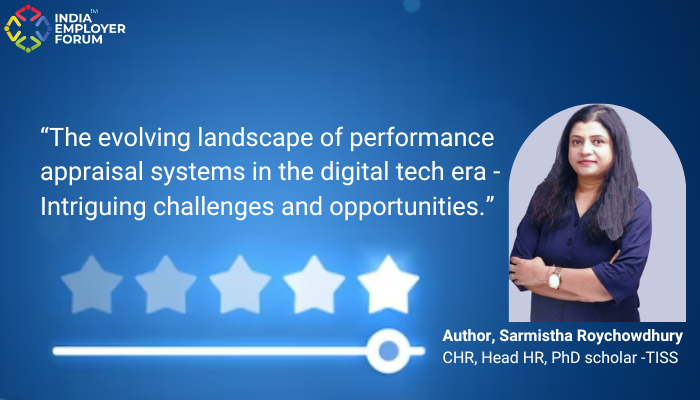Reward employees who make their role redundant, advocates Uttam Vasudevan, Regional Lead – Local HR Services; Asia-Pacific Japan & Greater China, CISCO Systems India Private Limited
It has been over two decades now and the time has arrived for HR leaders to revisit the prevailing Talent Management framework. However, in the last few years, the industry has managed to reinvent the wheel but has not done enough to re-engineer the entire framework. Today, we are staring at an imminent danger wherein we might end up having loads of our talent population either under-employed or burnt out. Hence, a paradigm shift is the need of the hour more than ever.
The industry and HR focus has predominantly been on hiring, retention, engagement, reward and recognition and hassle-free exit process. All these are important, but can it deliver for tomorrow’s needs and challenges? We have not looked beyond programs like retaining top talent, identifying successors, rewarding loyalty and making diversity and inclusion work. Are we going to focus our energy only on these aspects? My two cents: does the current talent management framework influence top-line profitability? Why is the industry experiencing so much exodus of employees due to either workforce restructuring or low performance? It is quite evident that the current practices and approaches are not working nor do they cater to today’s demands. This is a great opportunity for all of us in the HR community to raise up to the occasion and bring about a tectonic shift in the way we have approached the talent management practices.
Top talent and critical talent have been the most overtly used concepts in the industry and the entire reward mechanism was based on individual performance metrics. Earlier, they were seen in minority but with time this pool expanded. Finally, the half-cooked appraisal process (bell curve) was abandoned and the industry has so far been unable to invent a new alternate system to reward performance.
I have highlighted three key aspects that could be critical for the HR leaders and business leaders alike to evaluate and assess:
Empower employees who can make their current role redundant and reward them BIG
Today, the focus has been mainly on evaluating the as-is versus ‘to be’ organization chart. Rather, the goal should shift on empowering employees who can make the role redundant before the organization initiates. Employees need to be backed to create their own succession plan and exit plan simultaneously. The employees will only do when they are empowered and rewarded BIG. What does reward BIG mean? Does it mean new job change or promotion or high salary increase? None. These are conventional methods preached by our seniors and we have carried on their legacy for far too long. Sorry, but our DNA too is built with the same lineage. So, what does reward BIG mean? For example – extending financial support for an employee to go on his own and start his own business. Establishing incubation centers so that employees get access to the most rewarding entrepreneurial opportunities. Also, assurance from the firm that they will back the employee in their entrepreneurial journey. Can this work? THINK BIG!
Look for employees who make the role successful and not self (new Top Talent)
When employees reach certain level of success in their current role, leaders often tend to continue with the same incumbent. Such scenarios are not a win-win situation for both the employee and the organization. Employees can end up creating their own fiefdom, seen as larger-than-life figures and overall become a burden to the organization. Hence, organizations must focus on the role and not be carried away by the exemplary success of the individual. Every individual’s performance goes through the process of break-even and then break-out. We must ensure that when the employee’s performance is at its peak, we should start identifying a replacement or a successor for the role. The key success factor should be defined at the role level and not at the individual level. Of course, the responsibility remains with the individual to enhance and probably expand the scope. The success of the employee will depend on how quickly (s)he can be replaced and move on to the next role.
Employees don’t fear job-security but fear income continuity. How do we create a rewarding exit process which will enable churn and induction of fresh blood into the system?
It’s given that employment cannot be for a long-term based on multitude of issues ranging from technology advancement to artificial intelligence to robotics. Exit process should be created at the time of hiring just like career path or learning path. I know that it may not be seen as a positive gesture at the time of hiring but it will certainly create a greater impact and reimpose the trust factor. Employees don’t fear job-security, they fear income continuity – thus, organizations must work towards building a process which enables income continuity. A well-defined exit path at the time of hiring will ensure both business continuity as well as income continuity for the individual. I remember when my neighbor’s father took voluntary retirement from the firm that he was associated for 35 years, he had three children and no alternate source of income. However, the firm supported him to learn new life skills post retirement, which eventually enabled him to find new opportunities to earn income.
[Views expressed by the author are purely personal and nothing to do with the official position he is holding]
About the author
Uttam Vasudevan is the Regional Lead for Local HR Services; Asia-Pacific Japan & Greater China, CISCO Systems India Private Limited. He is a seasoned Human Resources professional with 15 + years’ of experience in managing the diverse facets of Human Resources function, which includes Business Partnering, Employee Engagement, Talent Management & Succession Planning, Compensation & Benefits, Reward & Recognition, Workforce Planning, Performance Management, HR Operations and Compliance.




